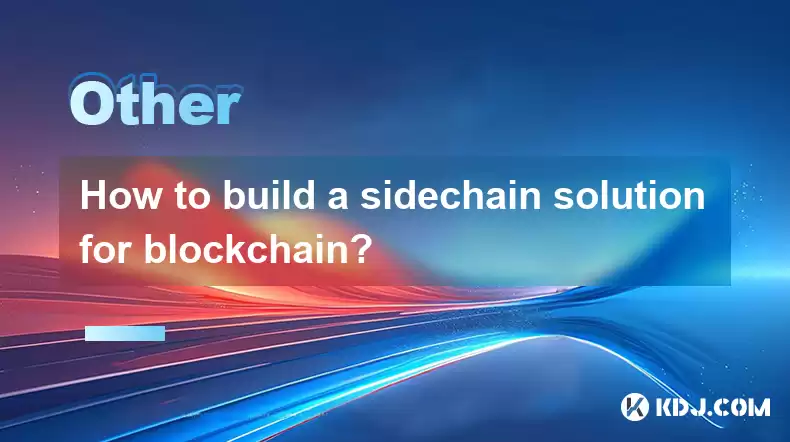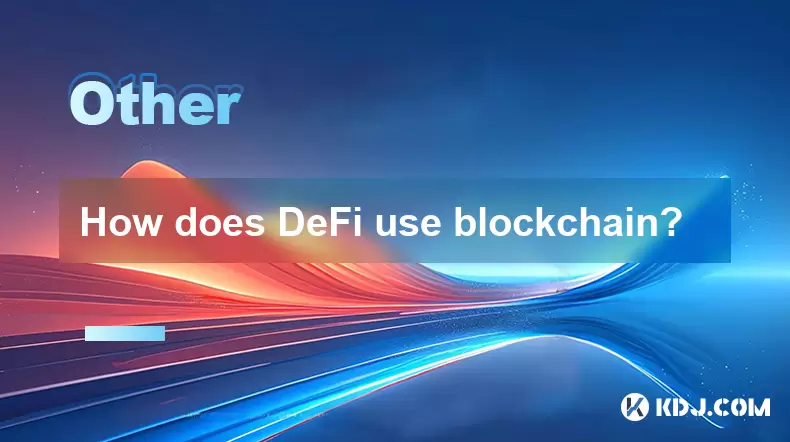-
 Bitcoin
Bitcoin $114400
1.70% -
 Ethereum
Ethereum $3501
3.13% -
 XRP
XRP $2.918
4.28% -
 Tether USDt
Tether USDt $0.9999
0.02% -
 BNB
BNB $753.8
2.00% -
 Solana
Solana $162.1
2.74% -
 USDC
USDC $0.9998
0.00% -
 TRON
TRON $0.3262
1.30% -
 Dogecoin
Dogecoin $0.1992
3.24% -
 Cardano
Cardano $0.7255
4.15% -
 Hyperliquid
Hyperliquid $38.54
5.34% -
 Stellar
Stellar $0.3965
7.51% -
 Sui
Sui $3.452
3.84% -
 Chainlink
Chainlink $16.29
4.05% -
 Bitcoin Cash
Bitcoin Cash $542.0
2.99% -
 Hedera
Hedera $0.2480
8.54% -
 Ethena USDe
Ethena USDe $1.001
0.04% -
 Avalanche
Avalanche $21.46
1.98% -
 Toncoin
Toncoin $3.661
3.45% -
 Litecoin
Litecoin $109.0
3.45% -
 UNUS SED LEO
UNUS SED LEO $8.961
-0.04% -
 Shiba Inu
Shiba Inu $0.00001223
3.33% -
 Polkadot
Polkadot $3.605
3.01% -
 Uniswap
Uniswap $9.167
4.19% -
 Monero
Monero $300.4
3.45% -
 Dai
Dai $1.000
-0.01% -
 Bitget Token
Bitget Token $4.329
2.11% -
 Pepe
Pepe $0.00001050
4.49% -
 Cronos
Cronos $0.1333
6.34% -
 Aave
Aave $259.0
3.64%
How to build a sidechain solution for blockchain?
Building a sidechain enhances blockchain scalability and privacy by allowing asset transfers between a separate, parallel blockchain and the main chain.
Apr 15, 2025 at 09:00 am

Building a sidechain solution for blockchain involves creating a separate blockchain that runs parallel to the main blockchain, allowing for the transfer of assets between the two chains. This can enhance scalability, privacy, and functionality. Here's a detailed guide on how to build a sidechain solution for blockchain.
Understanding Sidechains
Sidechains are independent blockchains that are interoperable with the main blockchain. They allow for the transfer of assets between the main chain and the sidechain, enabling developers to experiment with new features without affecting the main blockchain. The primary purpose of sidechains is to offload some of the main chain's workload, thereby improving scalability and efficiency.
Planning Your Sidechain
Before you start building, it's crucial to define the purpose of your sidechain. Are you looking to improve scalability, add new functionalities, or enhance privacy? Clearly defining your goals will help you design a sidechain that meets your specific needs. Additionally, consider the consensus mechanism you will use, as it will impact the security and performance of your sidechain.
Choosing the Right Technology Stack
Selecting the appropriate technology stack is vital for the success of your sidechain. Popular platforms for building sidechains include Ethereum's Plasma, Polkadot, and Cosmos. Each platform has its strengths and weaknesses, so choose one that aligns with your project's requirements. For instance, Ethereum's Plasma is suitable for scaling Ethereum-based applications, while Polkadot and Cosmos are designed for interoperability between different blockchains.
Designing the Sidechain Architecture
The architecture of your sidechain should be designed to ensure seamless interaction with the main blockchain. Key components of a sidechain architecture include the two-way peg mechanism, which allows for the transfer of assets between the main chain and the sidechain, and the consensus mechanism, which ensures the integrity of the sidechain. Additionally, consider implementing smart contract functionality to enable complex transactions and interactions on your sidechain.
- Two-way peg mechanism: This mechanism locks assets on the main chain and releases equivalent assets on the sidechain, and vice versa. It ensures that the total supply of assets remains constant across both chains.
- Consensus mechanism: Choose a consensus mechanism that balances security and performance. Options include Proof of Work (PoW), Proof of Stake (PoS), and Delegated Proof of Stake (DPoS).
- Smart contract functionality: Implementing smart contracts can enhance the functionality of your sidechain, allowing for automated and programmable transactions.
Developing the Sidechain
Once you have planned and designed your sidechain, it's time to start developing. Here are the steps to follow:
- Set up the development environment: Install the necessary software and tools, such as Node.js, Truffle, or other relevant frameworks, depending on your chosen platform.
- Write the sidechain code: Develop the core components of your sidechain, including the two-way peg mechanism, consensus mechanism, and smart contract functionality. Use the appropriate programming language and frameworks for your chosen platform.
- Test the sidechain: Conduct thorough testing to ensure that your sidechain functions as intended. This includes testing the two-way peg mechanism, consensus mechanism, and smart contract functionality.
- Deploy the sidechain: Once testing is complete, deploy your sidechain to a testnet or mainnet, depending on your readiness. Ensure that the deployment process is smooth and that the sidechain is accessible to users.
Integrating with the Main Blockchain
Integrating your sidechain with the main blockchain is crucial for enabling asset transfers. Here's how to do it:
- Implement the two-way peg mechanism: Develop the necessary code to lock assets on the main chain and release equivalent assets on the sidechain, and vice versa. This involves creating smart contracts on both chains to manage the asset transfers.
- Ensure security and trust: Implement security measures to prevent double-spending and ensure that the two-way peg mechanism is secure. This may involve using cryptographic techniques and multi-signature wallets.
- Test the integration: Conduct thorough testing to ensure that the integration between the main chain and the sidechain is seamless and secure. This includes testing asset transfers in both directions and verifying that the total supply of assets remains constant.
Launching and Maintaining the Sidechain
After successfully integrating your sidechain with the main blockchain, it's time to launch and maintain it. Here are the steps to follow:
- Launch the sidechain: Announce the launch of your sidechain to the community and provide clear instructions on how to use it. Ensure that the sidechain is accessible and user-friendly.
- Monitor and maintain the sidechain: Regularly monitor the performance and security of your sidechain. Address any issues promptly and keep the sidechain updated with the latest security patches and features.
- Engage with the community: Build a strong community around your sidechain by engaging with users, developers, and other stakeholders. Encourage feedback and suggestions to improve the sidechain.
Frequently Asked Questions
Q: What are the main benefits of using a sidechain?
A: The main benefits of using a sidechain include improved scalability, enhanced privacy, and the ability to experiment with new features without affecting the main blockchain. Sidechains can offload some of the main chain's workload, leading to faster transaction processing and lower fees.
Q: Can sidechains be used with any blockchain?
A: While sidechains are most commonly associated with Bitcoin and Ethereum, they can be used with any blockchain that supports the necessary interoperability features. Platforms like Polkadot and Cosmos are designed to facilitate the creation of sidechains for various blockchains.
Q: How do sidechains ensure the security of asset transfers?
A: Sidechains ensure the security of asset transfers through the use of a two-way peg mechanism, which locks assets on the main chain and releases equivalent assets on the sidechain. This mechanism is secured using cryptographic techniques and multi-signature wallets to prevent double-spending and ensure the integrity of asset transfers.
Q: What are the potential challenges of building a sidechain?
A: Building a sidechain can be challenging due to the need for seamless integration with the main blockchain, ensuring the security of asset transfers, and maintaining the performance and scalability of the sidechain. Additionally, gaining community trust and adoption can be difficult, as users may be hesitant to move assets to a new and untested sidechain.
Disclaimer:info@kdj.com
The information provided is not trading advice. kdj.com does not assume any responsibility for any investments made based on the information provided in this article. Cryptocurrencies are highly volatile and it is highly recommended that you invest with caution after thorough research!
If you believe that the content used on this website infringes your copyright, please contact us immediately (info@kdj.com) and we will delete it promptly.
- Navigating the Wild West: Token Unlocks and Altcoin Surges - A Trader's Guide
- 2025-08-04 02:30:11
- AI, Crypto, and the Frontier: Riding the Wave of Innovation
- 2025-08-04 03:50:11
- Snorter Presale Fuels Meme Coin Frenzy: Price Explosion Incoming?
- 2025-08-04 02:50:12
- Bitcoin, Altcoins, and Momentum: What's Moving the Crypto Markets?
- 2025-08-04 02:30:11
- Punisher Coin Presale: The Meme Coin Primed to Explode (No Joke!)
- 2025-08-04 03:50:11
- Crypto Analysts' August Picks: Beyond Bitcoin and Ethereum
- 2025-08-04 02:50:12
Related knowledge

What is the difference between on-chain and off-chain transactions?
Aug 02,2025 at 04:22pm
Understanding On-Chain TransactionsOn-chain transactions refer to digital asset transfers that are recorded directly on a blockchain ledger. These tra...

What is a node's role in a blockchain network?
Aug 03,2025 at 03:16pm
Understanding the Function of a Node in a Blockchain NetworkA node is a fundamental component of any blockchain network, acting as a participant that ...

How are transactions verified on a blockchain?
Aug 04,2025 at 12:35am
Understanding the Role of Nodes in Transaction VerificationIn a blockchain network, nodes are fundamental components responsible for maintaining the i...

What is the double-spending problem and how does blockchain prevent it?
Aug 02,2025 at 01:07pm
Understanding the Double-Spending ProblemThe double-spending problem is a fundamental challenge in digital currency systems where the same digital tok...

What is the difference between a blockchain and a database?
Aug 01,2025 at 09:36pm
Understanding the Core Structure of a BlockchainA blockchain is a decentralized digital ledger that records data in a series of immutable blocks linke...

How does DeFi use blockchain?
Aug 03,2025 at 11:15pm
Understanding the Role of Blockchain in DeFiDecentralized Finance (DeFi) relies fundamentally on blockchain technology to operate without intermediari...

What is the difference between on-chain and off-chain transactions?
Aug 02,2025 at 04:22pm
Understanding On-Chain TransactionsOn-chain transactions refer to digital asset transfers that are recorded directly on a blockchain ledger. These tra...

What is a node's role in a blockchain network?
Aug 03,2025 at 03:16pm
Understanding the Function of a Node in a Blockchain NetworkA node is a fundamental component of any blockchain network, acting as a participant that ...

How are transactions verified on a blockchain?
Aug 04,2025 at 12:35am
Understanding the Role of Nodes in Transaction VerificationIn a blockchain network, nodes are fundamental components responsible for maintaining the i...

What is the double-spending problem and how does blockchain prevent it?
Aug 02,2025 at 01:07pm
Understanding the Double-Spending ProblemThe double-spending problem is a fundamental challenge in digital currency systems where the same digital tok...

What is the difference between a blockchain and a database?
Aug 01,2025 at 09:36pm
Understanding the Core Structure of a BlockchainA blockchain is a decentralized digital ledger that records data in a series of immutable blocks linke...

How does DeFi use blockchain?
Aug 03,2025 at 11:15pm
Understanding the Role of Blockchain in DeFiDecentralized Finance (DeFi) relies fundamentally on blockchain technology to operate without intermediari...
See all articles

























































































